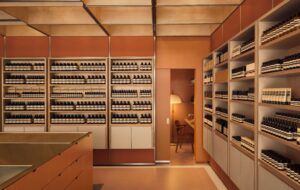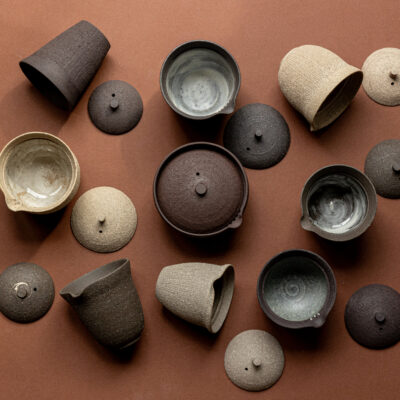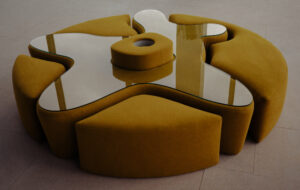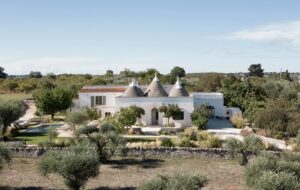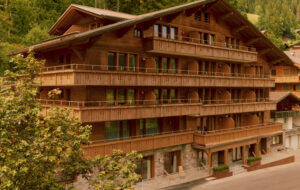|
|
||
|
On a tall plinth outside the grand, gilded Petit Palais is a small aluminium spaceship. In 1938, Charlotte Perriand and her collaborator Pierre Jeanneret designed this futuristic structure, the Refuge Tonneau, as an alpine retreat that could sleep up to eight mountaineers. Its aluminium panels are lashed together with cables and punctuated with portholes, and it resembles Buckminster Fuller’s 1927 Dymaxion House. The exhibition that it advertises, which looks at the many ways in which Perriand used photography to inspire her designs, foregrounds a more obscure precedent: a merry-go-round Perriand photographed in Croatia. In her autobiography, Une Vie de Création, Perriand (1903-1999) talks of the expeditions she undertook in the 1930s with Jeanneret and Fernand Léger to collect found objects to photograph: “Our haversacks were filled with treasures: pebbles, bits of old shoes, wood with holes in it, horsehair brooms, rolled and polished by the sea. Fernand and I sifted through them, dipping them in water to make them shine. That is what we called art brut.” Many of these objects display affinities with the furniture she went on to create: the Ombra Tokyo chair in curved ply – with its wishbone legs – echoes an image of a chicken bone, and the spiky spinal cord of a fish is mirrored in the Banquette Tokyo (both 1954); a bamboo chaise longue from 1940 is a reflection of a photo of an old woman reclining. All these pieces have been recently reissued by Cassina as part of its Cassina I Maestri collection. Though she never exhibited her photographs in her lifetime (a huge batch of her negatives were only recently discovered), they were, as this exhibition makes clear, a form of research, a notebook of natural and industrial shapes that served to influence her designs. Perriand, who trained as an architect, also used photography in her architectural projects and propaganda work for the Popular Front – the left-wing alliance that included the French Communist Party, of which she was a member until 1939. One of her 15m-long collage murals from 1936, recreated here, shows “La Grande Misère de Paris”. This visual catalogue of urban squalor is overwritten with disturbing statistics and asks: “Machines produce countless riches – where do all the riches go?” A year later, in the Ministry of Agriculture’s star-shaped pavilion designed by Perriand for the Paris World’s Fair, she worked with Léger to create colourful, graphic collages that romanticised peasant life and had a similar political message. Famous for her tubular steel range of furniture designed for Le Corbusier in the 1920s, with cushions that ooze from the frame like Claes Oldenburg inflatables, and her stunning aluminium bookcases created for Atelier Jean Prouvé in the 1950s, Perriand is often associated with chrome and shiny metal: “Metal plays the same part in furniture as cement has done in architecture,” she wrote in an early manifesto. “IT IS A REVOLUTION. The Eiffel Tower could never have been made of wood.” But here, alongside that classic work, we see her appreciation of natural materials and rustic Provençal motifs, as well as the results of the inspiration of the six years she spent in Japan during the 1940s. She had a plastic sensitivity and, as an animation of the interior of her own house shows, was a master of spatial economies and the use of partitions to hide and reveal rooms. Perriand mixed with sculptors and painters, as well as architects and designers, and was friends with Dora Maar, Joan Miró and many others. This exhibition, in looking at the many ways in which photography influenced her creative process, seeks to elevate her alongside them, as an artist as much as designer. Tabletops are displayed on the wall like abstract works. One is painted Yves Klein blue; another with intersecting slats is reminiscent of Frank Stella’s Black Paintings; and a set of side tables in different colours resemble pieces of an Alexander Calder mobile. Charlotte Perriand: From Photography to Design. Petit Palais, Paris. Until 18 September |
Image Charlotte Perriand
Words Christopher Turner |
|
|
||




